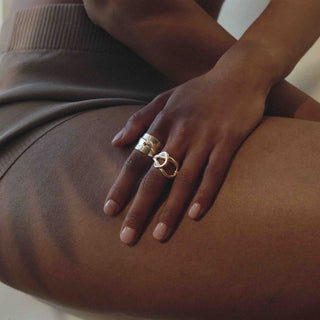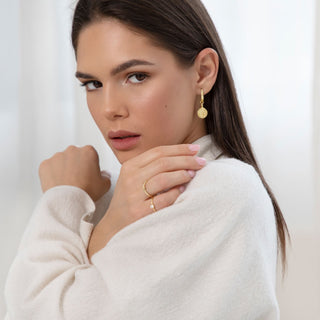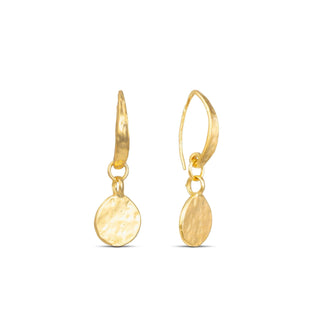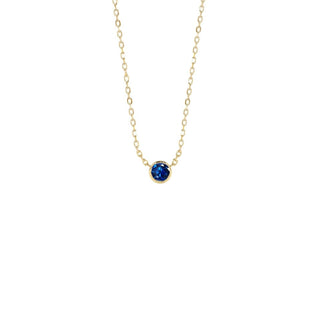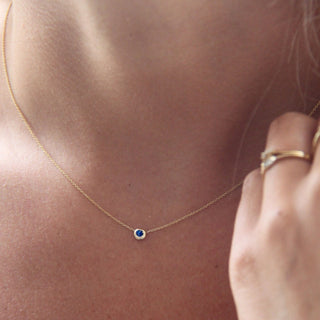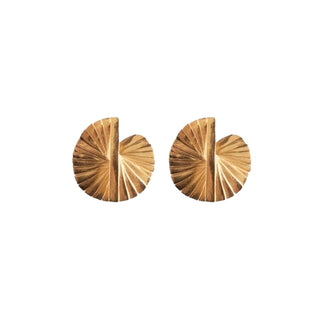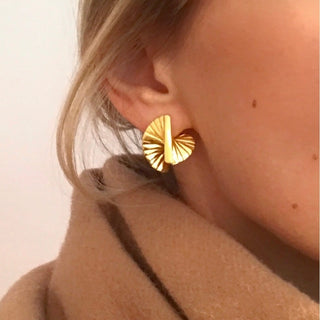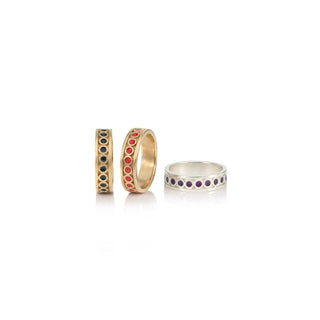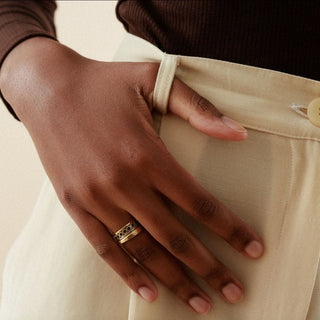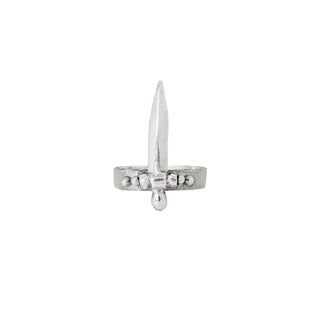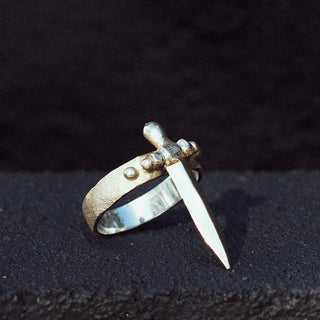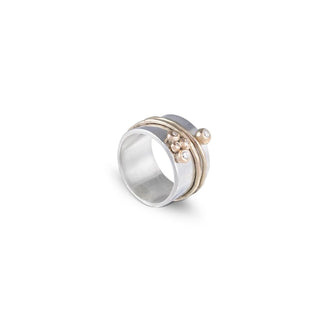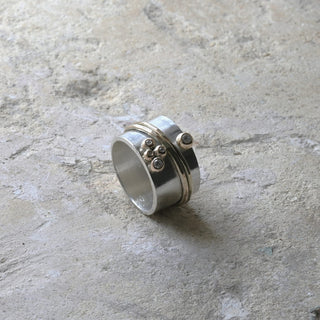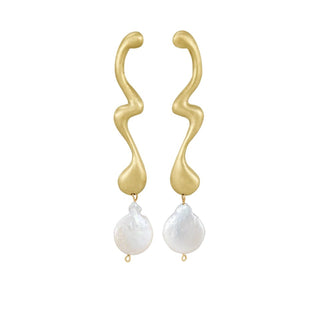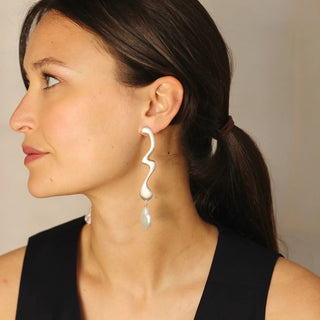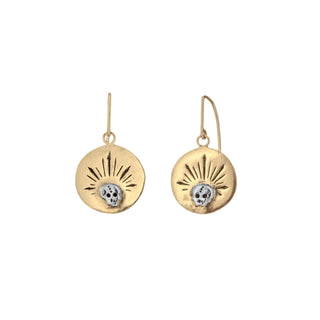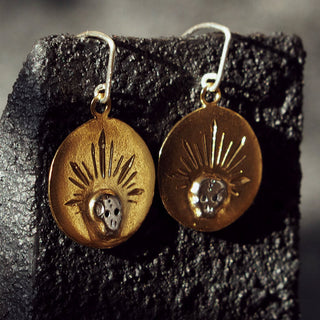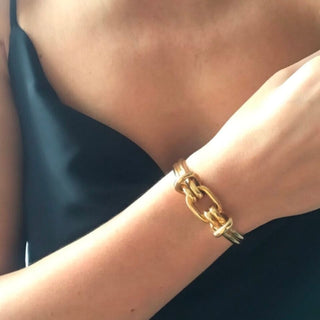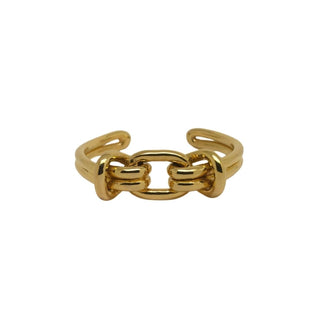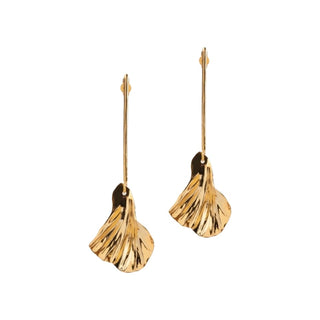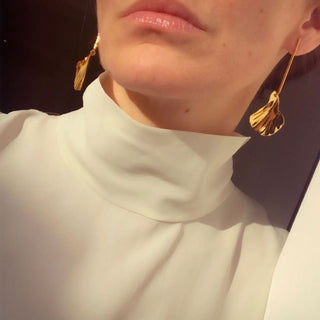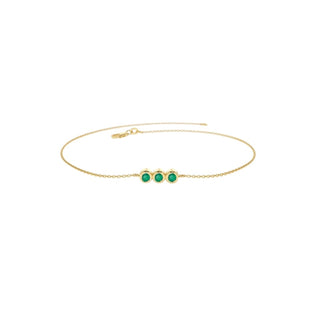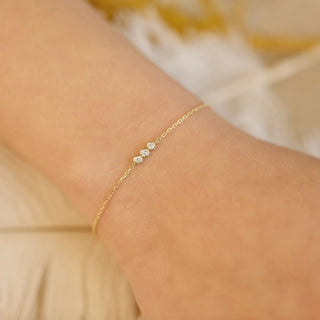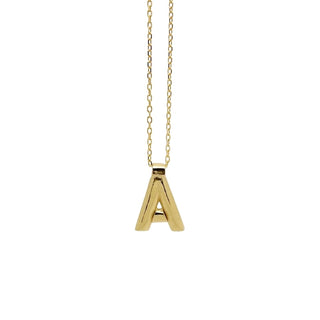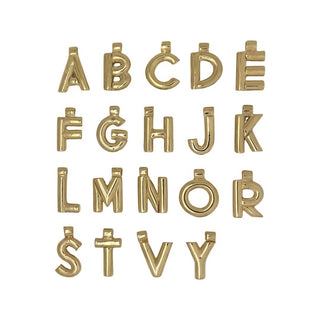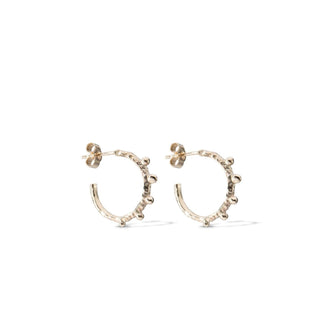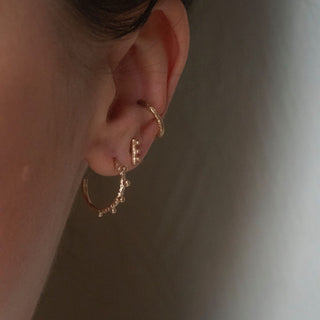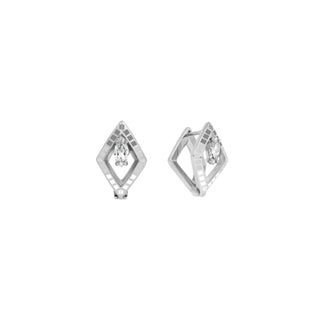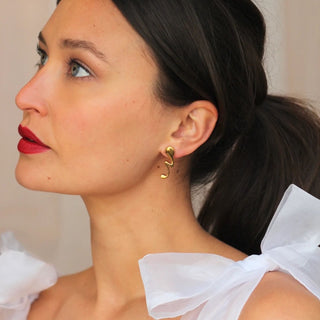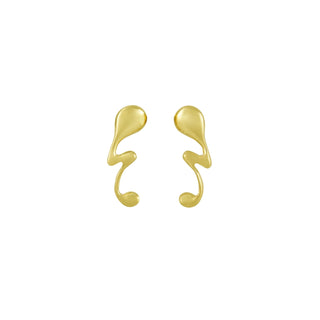The sustainable movement has gone far beyond remembering your travel cup at your favourite coffee shop and getting the bus rather than driving. Now, we know more, and we do more.
Every single purchase we make has an impact on the planet. Everyone’s thinking more carefully about our clothes, our food, our beauty products, our transportation, and our accessories. Everything from the paint we use in our homes, to rings on our fingers can be sustainable.
At Pearls & Pomegranates, we’re experts in sustainable jewellery. Not only do we gather the UK’s leading ethical jewellery designers, and curate lists of stylish, sustainable jewellery, but we also seek to educate everyone on how jewellery can be more environmentally friendly.
Here in this blog, we’ve collected everything you need to know about sustainable jewellery, so you’re empowered to make the best choice for you, and for the environment.
- One: How jewellery can affect the environment
- Two: What is sustainable jewellery?
- Three: Recycled gold and silver jewellery in the UK
- Four: What is fairly mined gold and silver jewellery?
- Five: Mined diamonds vs fairly mined diamonds vs lab- grown diamonds
- Six: How can jewellery be vegan?
- Seven: Sustainable jewellery—Handmade in small batches
How jewellery can affect the environment
It’s difficult to accurately estimate the negative impact the jewellery industry has on the planet. From mining the materials, to processing the materials, to manufacturing the jewellery, to shipping items around the world, the damage is enormous.
Materials most often used in jewellery are:
- Precious metals, such as gold, silver, and platinum
- Precious gems, such as diamond, sapphire, ruby, and emerald
- Semi- precious gems, such as topaz, amethyst, garnet, and peridot
These materials are found in the ground, often deep within the earth. To get them to the surface, they must be mined. Mining processes are complex. Overall, they are dangerous to both human life and the natural environment. Mining is responsible for deforestation, pollution to land, air, and water, and damage to eco systems.
For example, around 16,300 tonnes of carbon dioxide is produced per one tonne of mined gold, and the average stone in an engagement ring is the product of the removal and processing of 200 to 400 million times its volume of rock. This is the exact definition of “unsustainable”. One harmful practice after another to achieve one end. Simply, we cannot go on creating so much harm to nature and our climate.
What about ethical jewellery?
Generally, while the terms ‘ethics’ and ‘sustainability’ often appear together, they mean different thing. ‘Sustainability’ is focused on the environmental impact of manufacture and processing, while ‘ethics’ refers to the human cost. This blog focuses on the environmental damage of some aspects of the jewellery industry and how to choose the most sustainable jewellery. However, it’s important to briefly mention the ethical impacts of the jewellery industry, too. Sadly, the jewellery industry is rife with poor ethics, including child labour, dangerous working conditions, breaches to human rights, human displacement, and sources of violent conflict. It is developing counties and indigenous communities which are disproportionately affected by the consequences of jewellery manufacture. Generally, if an independent jewellery designer is committed to working sustainably, the issues around ethics are also minimised. Investing in jewellery from an ethical manufacturer means you aren’t funding extremely harmful practices around the world.
Explore Pearls & Pomegranates's sustainability mission here, and our partnership with Bioconservancy where together we conserve 20 square metres of Colombian rainforest every time you make a purchase with us.
What is sustainable jewellery?
Simply, “sustainable jewellery is jewellery that is produced without negatively impacting the planet”.
Every stage of making a piece of jewellery has some degree negative environmental impact. Specifically, “sustainable” refers to the manufacture and materials in the jewellery. The practices involved in creating a piece of sustainable jewellery are manageable and repeatable, getting the same result again and again, causing minimal damage to the environment.
For example, a ring that is made of recycled gold can be worn for a lifetime before being melted down and re-crafted into another ring. Similarly, diamonds can be lab- grown rather than mined and processed with harmful practices. Instead of mining more raw materials, and creating more and more pieces of jewellery, we can repurpose existing materials.
The benefits extend almost beyond measure. Less transportation, less mass production, less pollution, less bio-diversity damage, less human suffering. All of this, but without compromising on beautiful, timeless accessories. It’s easy to see why sustainable jewellery is the future.
Pearls & Pomegranates only partner with sustainable, ethical jewellers.
Recycled gold and silver jewellery in the UK
Once gold and silver has been mined and processed into jewellery using traditional methods, the damage to the planet has been done. While we cannot undo that damage- we cannot put the metal back into the earth, restore the natural eco system, or reverse the land, air, and water pollution- we can make sure the need to mine more precious metal is reduced. Sadly, only around 30% of gold used in jewellery is recycled, meaning a great deal of gold is still being mined.
To be recycled, an expert recycler gathers waste gold or silver from jewellery, watches, household items, electronics, and coins. They then test the metal to assess its quality and begin the refining processes. The silver and gold are melted separately in large crucibles at very high temperatures. This process makes the metal liquid and burns any impurities. The molten metal is poured into bars to be cooled, packed, and transported to jewellery designers.
Recycled gold jewellery and recycled silver jewellery are both extremely popular as customers want to make more ethical choices. While recycled gold and silver does have to be processed, it is a far more straightforward and sustainable process than mining the earth for more.
Pearls & Pomegranates's partner: Drawn
Birgit Toke Tauka Frietman makes timeless, fluid jewellery, deeply influenced by history and emotion. Every piece in the collection, from hair jewellery to earrings to bracelets are made in either recycled gold or recycled sterling silver.
What is Fairmined gold and silver jewellery?
Some gold and silver can be ‘fairly mined’. Small scale and artisanal mining processes are not as harmful to the environment and are vital income sources to local communities. The Fairmined organisation supports independent miners who extract metals “in harmony with nature, human dignity and sustainable development”.
Faimined have a certification process to ensure the mining process is ethical and sustainable. They have a directory of jewellers who are licensed to use Fairmined metals, and they support businesses currently using unethical sourced of gold and silver to switch to their more sustainable solution.
Pearls & Pomegranates's partner: Kitty Joyas
Kitty Joyas only uses fair mined and recycled gold and silver in her stunning jewellery. Not afraid to mix bold colour and beautiful pattern in her pieces, Kitty does not compromise on style or sustainability.
Mined diamonds vs fairly mined diamonds vs lab- grown diamonds
Mined diamonds
Mining for diamonds is extremely unsustainable. It takes a huge amount of energy, damage to the environment, pollution, and dangerous work practices. The single diamond which has been mined, cut, and polished has caused great harm to the planet, and this same harm is duplicated every time a new diamond is mined. This is not sustainable because we cannot keep mining diamonds and suffering the environmental consequences forever. Additionally, diamond mining is a huge trigger for conflict and human rights abuses.
Fairly mined diamonds
Like Fairmined gold and silver, there are processes where diamonds can be more sustainably and ethically mined. Sometimes referred to as “fair trade diamonds”, these diamonds are mined and processed with high regulations for safety, workers are paid fairly, and the diamonds are extracted with the environment in mind. The Diamond Development Initiative (part of the Resolve NGO) have complied The Maendeleo Diamond Standards. These standards have been developed in consultation with artisanal diamond miners and seek to improve the safety of mining, protect human rights, and limit negative impacts on the environment.
Lab- grown diamonds
Lab- grown diamonds the most sustainable of all diamonds. They are not mined, they’re created. Using high pressure and high temperature processes in a laboratory, the diamonds are made. It’s is a process that is safe, replicable, and has a minor impact on the environment. While everything humans do has some effect on the planet, being sustainable is about choosing the least harmful option. Thousands and thousands of diamonds can be produced without hurting workers or the planet.
When choosing sustainable diamond jewellery, always opt for second hand, fairly mined, or lab- grown diamonds.
Pearls & Pomegranates’s partner: Lily Flo
The iconic designs of Lily Flo’s Circinus, Auriga, and Stardust collections are unified by their delicate metalwork and dainty ethical gemstones. Lily Flo only uses vintage or lab- grown diamonds, emeralds, sapphires, and rubies in their classic pieces.
How can jewellery be vegan?
Like the vegan diet, vegan jewellery does not contain any materials which are from an animal. This includes every stage of the design, manufacture, and shipping of the jewellery. While it is obvious that metals and gemstones are not derived from animal sourced, there are plenty of ways jewellery can be non- vegan.
For a piece of jewellery to be vegan, it should contain no horns, shells, teeth, coral, or feathers. Importantly, this includes pearls, which come from oysters. Sometimes fabrics can be used in jewellery. In this case fur, silk, and leather should be avoided. Additionally, any glues, polishes, or chemicals used in the creation of the jewellery should not have been tested on animals or contain any animal components, including beeswax.
Pearls & Pomegranates’s partner: April March
Sarah Brannagan is an incredibly talented jewellery designer who owns the sustainable jewellery brand April March. She works in line with vegan principles, as well as only using recycled gold and silver, as well as fair mined diamonds.
Pearls & Pomegranates’s partner: Ara the altar
Not only is Lauren Kings a superbly skilled jeweller, but she runs every part of her business, Ara the altar, with the environment and ethics at the forefront of her mind. Her beautiful sustainable jewellery is vegan as standard.
Sustainable jewellery: handmade in small batches
The most sustainable jewellery is handmade in small batches by expert jewellers. This way, every stage of the process is about what’s best for the piece, what’s best for the materials, and the jeweller can make sure ethical, sustainable choices are made throughout. A handmade piece of jewellery looks handmade. It’ll be slightly irregular in shape, there might be the odd indentation or tool mark, the metal will catch the light in a completely unique way. Your handmade piece of jewellery will literally be one- of- a- kind.
If a piece is jewellery is not made by hand, it is made by machine. This process can be referred to as mass production. Sometimes you might see jewellery sold as “hand finished”. This means the jewellery was machine made but at the last stage a jeweller engraved it, or added something bespoke.
With machine made pieces, not only is each one completely identical, but the bottom line is always price. Mass produced jewellery is cheaper because it takes a fraction of the time to make, and the materials are lower quality. When cost is most important, corners in quality are cut, and the environment is not considered. Mass produced jewellery is manufactured in countries other than the UK meaning there the resources used to transport the jewellery also negatively affects the environment.
Pearls & Pomegranates’s partner: Ruddock
Sarah Ruddock’s jewellery collections are modernist, sculptural forms which are at once timeless and memorable. Each piece is hand made in small batches in London, using recycled gold and silver always.
Finally…
As you can undoubtedly tell, there are many reasons for buying sustainable jewellery. There’s no compromise on quality or style, but huge benefits to people, the planet and our futures. When it comes to choosing your next accessory, research the designer and their values to know if they’re sustainable or not.
Each of the talented jewellers who work with Pearls & Pomegranates is committed to sustainability as a core value. By simply browsing our directory, you’ll find a jeweller who cares about the earth as much as you do.
Now you’re armed with all the facts about sustainable jewellery, you empowered to make a choice that’s right for you, and for the environment.
Find out more about sustainable jewellery here or sign up to the Pearls & Pomegranates newsletter to be the first to know about sales, styling tips, and the latest information about sustainable jewellery.

